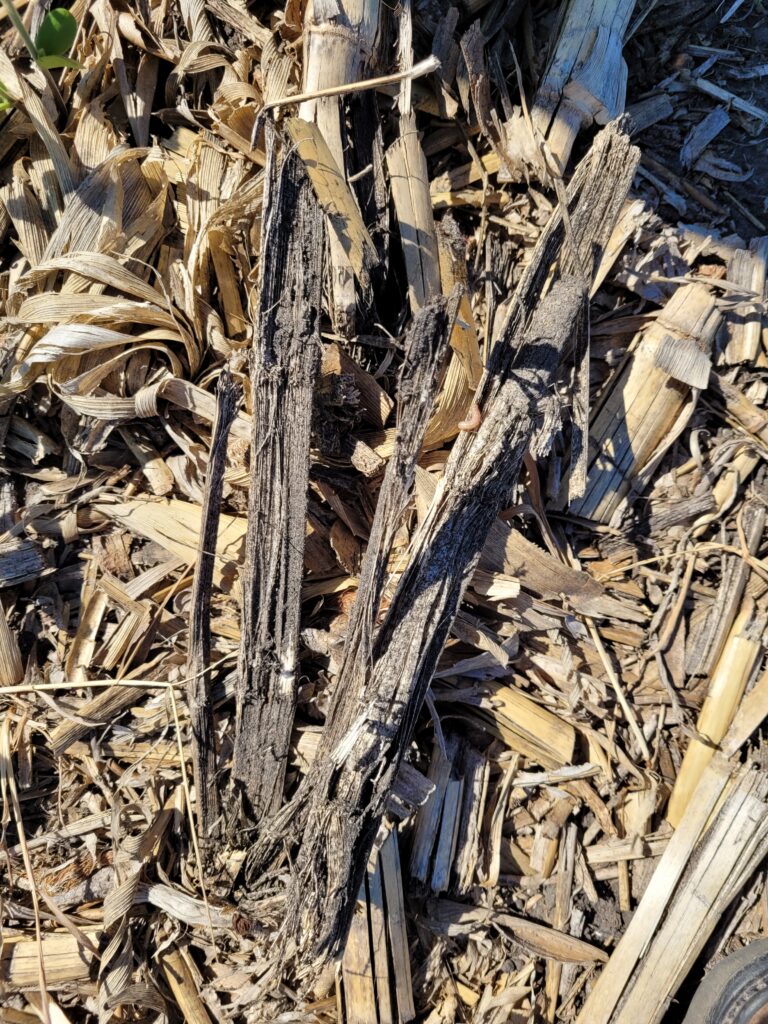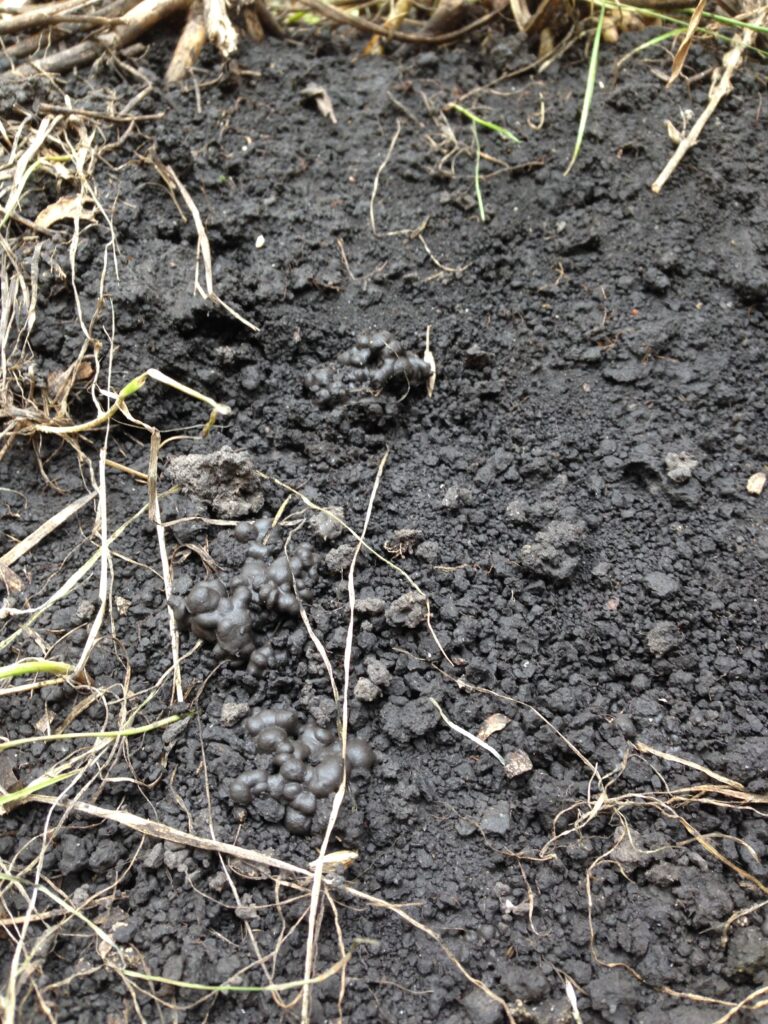Why Should You Consider Residue Breakdown?
I’ve been walking fields in the last several weeks and here are some of my observations from Minnesota and Iowa.
The residue digestion portion of ProfitProAG’s “Recipe for Success” is working well. I’m seeing corn stalk residue that is turning black on the outside. The pith on the inside is literally disintegrating. In fields with no-till soybeans planted into corn stalks the stalks were breaking down nicely.
I also saw evidence of biological activity under the old corn roots. There were many earthworms. The soil was aggregated and crumbled nicely. I also noticed many earthworm middens in the fields that were treated with the Crop Residue Digestion Program. Middens are areas in the soil where the earthworm forms a mound of residue so he can bring that residue down into his burrow during the night to feed on. Middens are good signs of earthworms and healthy biological activity. When you add cereal rye or other cover crops to the equation, we see up to 38% more middens according to the Iowa Learning Farms data.
Here are four more reasons to consider using the residue breakdown portion of the “Recipe for Success.”
- Nutrient recovery. Roughly four tons of corn residue per acre are left behind by a 180 bu/A corn crop. That material contains 80 lbs N, 30 lbs P2O5, 190 lbs K2O, 16 lbs S, 35 lbs Ca and 25 lbs Mg. These nutrients are free if we can breakdown the residue biologically and release them to next year’s crop. High amounts of potash are found in the leftover corn residue. With the trend of increasing fertilizer prices, if we can release 190 lbs of potash for next year’s crop, we can save that money and put it towards a cover crop and the Crop Residue Digestion Program.
- Fewer pests and less disease. Corn residue is one of the best places for disease pathogens and insects to overwinter. By digesting the residue, the pests will have a difficult time surviving the winter without the protection of the residue.
- Less hair-pinning. Over the years, I’ve noticed corn residue that hasn’t been broken down can get in the planter furrow. This can interfere with seed to soil contact and can be detrimental to seed germination and emergence. When the residue is digested, it flows better through the planter and reduces hair pinning of the trash.
- More organic matter. The Crop Residue Digestion Program helps build organic matter. Residue needs to be digested by fungi, bacteria and earthworms in order for it to be turned into organic matter. ProfitProAG’s program predigests the residue allowing the microbes and earthworms to finish the job of creating organic matter.
These are just a few of the many good reasons to put our Crop Residue Digestion Program to work on your farm. Try it and see for yourself the positive difference it can make!

Cornstalk residue breakdown

Earthworm Middens
Click here for the print friendly version
